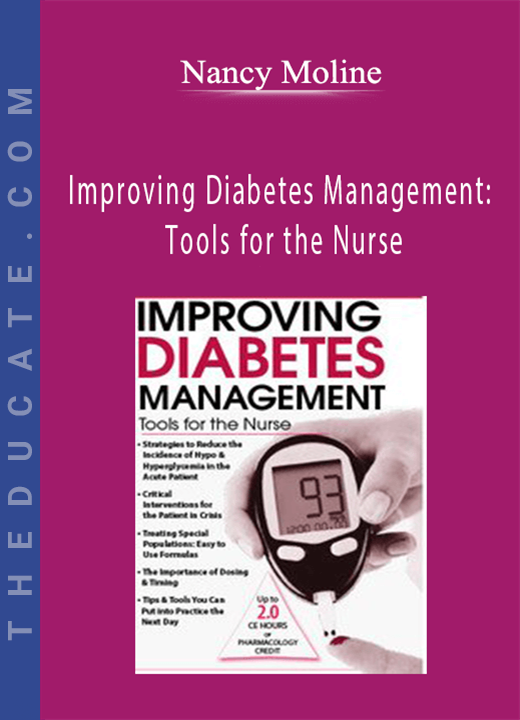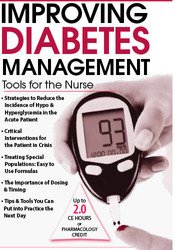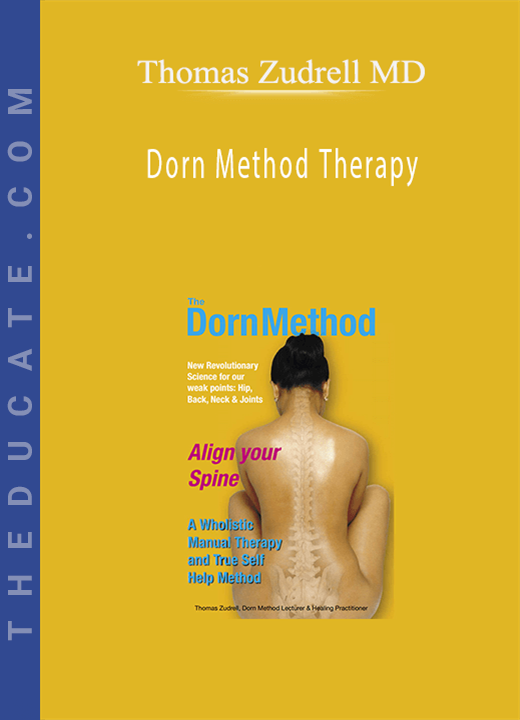Description
-
Nancy Moline – Improving Diabetes Management: Tools for the Nurse
- Faculty:
- Nancy Moline
- Duration:
- Full Day
- Format:
- Audio and Video
- Copyright:
- May 19, 2017
Description
- Strategies to Reduce the Incidence of Hypo & Hyperglycemia in the Acute Patient
- Critical Interventions for the Patient in Crisis
- Treating Special Populations: Easy to Use Formulas
- The Importance of Dosing & Timing
- Tips & Tools You Can Put into Practice the Next Day
Until recently, glucose control in the hospital setting was largely ignored even in patients with a diagnosis of diabetes. We didn’t realize 1 out of every 3 patients we were caring for was potentially suffering the consequences of uncontrolled hyperglycemia and, worse, these unknown patients were experiencing higher mortality rates after discharge. Bottom line, we MUST do better and you, the bedside nurse, play a critical role in identifying and managing your hypo and hyperglycemic patients.
This seminar will address issues you face in the hospital and give answers to questions you won’t find in any textbook. Imagine being able to look at a single flowsheet and understand exactly why your patient continues to experience hypoglycemia, or persistent hyperglycemia. Expert, Nancy Moline, RN, M.Ed., CDE, will share with you the management techniques and tips she has developed through her extensive experience and increase your understanding of the complexities of diabetes. You will leave this seminar with new tools and formulas to improve the outcomes of your patients with and without diabetes diagnosis.
Handouts
Outline
Glycemic Targets for Hospitalized Patients
- Clear interpretation of AACE & ADA guidelines
- Adjusting limits for the critically ill patient
- Non-critical patients: How high is too high
Recognizing Symptoms of Hypoglycemia
- Hypoglycemic unawareness: How are we missing this?
- Interventions that change outcomes
- 15/15 Rule
- Timing and Dose: The good, the bad, the ugly
- IV dextrose
- Glucagon
Reducing Incidence of Hypoglycemia
- Finger sticks & technique – it does matter!
- Critical timing for pre-meal & correction insulin
- The nurse’s role in ensuring carbohydrate-consistent meals
Symptoms & Critical Interventions for Hyperglycemia
- The differences of DKA & HHNK
- Diabetic Ketoacidosis
- A complex metabolic process
- Identifying the patient at risk
- Managing fluid replacement to avoid complications
- Insulin drips
- Critical labs & acute management
- Nursing Management of HHNK
- Identifying the symptoms
- Don’t forget your ABCs
- Common laboratory pitfalls
- Restoring electrolyte balance
Consequences of Acute Hyperglycemia
- Addressing & managing new wound infections
- The dangers of:
- Platelet abnormalities
- Inflammatory cytokine response
- The patient & the facility at risk:
- Poor patient outcomes
- Readmissions
- Increased length of stay
- Insulin resistance
Treating Special Populations Using a Simple Formula
- The patient newly prescribed steroids
- Adjusting for tube feedings
- TPN: Understanding the effects for the diabetic patient
- Considerations for patients on R-U-500 insulin
Insulin for Improved Glucose Control
- Type 1 vs. Type 2 guidelines
- Action times of insulins
- Calculating Basal/ Bolus Insulin
- Miami 4/12 Rule
- Correction scales based on insulin sensitivity
Oral Agents in the Hospital Setting
- NPO vs eating status
- Precautions for Metformin
Safety Issues with Managing Insulin Pumps
- Patient exclusion criteria
- Recognizing pump problems
- When to remove pumps
System Improvements Positively Impacting Patient Outcomes
- Standardized correction scales based on insulin sensitivity
- Standard protocols for treating hypoglycemia
- Physician order sets for insulin initiation
- Carbohydrate labels on meal trays/snacks
Putting It All Together
- Case Studies: What went right and what went wrong
- Solving problems using the glucose accordion flowsheet report
Faculty
Nancy Moline, RN, M.Ed., CDE Related seminars and products: 2
Nancy Moline, RN, M.Ed., CDE, has more than 25 years of experience in diabetes management. As a diabetes nurse consultant, she recognized the need for hospital nurses to increase their knowledge and confidence in managing issues related to insulin and glucose control. Nancy designed a program for bedside nurses that resulted in decreased incidences of hypoglycemia and insulin errors. Additionally, she designed and coordinated the implementation of a diabetes chronic conditions management program for a large HMO, training nurses to become diabetes care managers.
Nancy is a published author whose work includes the article “Diabetes Management in a Health Maintenance Organization: Efficacy of Care Management using group Cluster visits” in the Diabetes Care Journal. She is also a past winner of the research award from Kaiser Permanente, Northern California for the Diabetes Cooperative Care Clinic. Nancy presents on the national level and is a regular presenter for the UCSF program “Becoming a Diabetes Educator.”
Disclosures:
Financial: Nancy Moline has an employment relationship with Alta Bates Hospital. She receives an honorarium from Alameda County Health System; King Hooper Diabetes Education, Inc.; and University of California San Francisco Board of Nursing. Ms. Moline receives a speaking honorarium from PESI, Inc.
Nonfinancial: Nancy Moline is a member of the American Association of Diabetes Educators.








4 reviews for Improving Diabetes Management: Tools for the Nurse – Nancy Moline
There are no reviews yet.